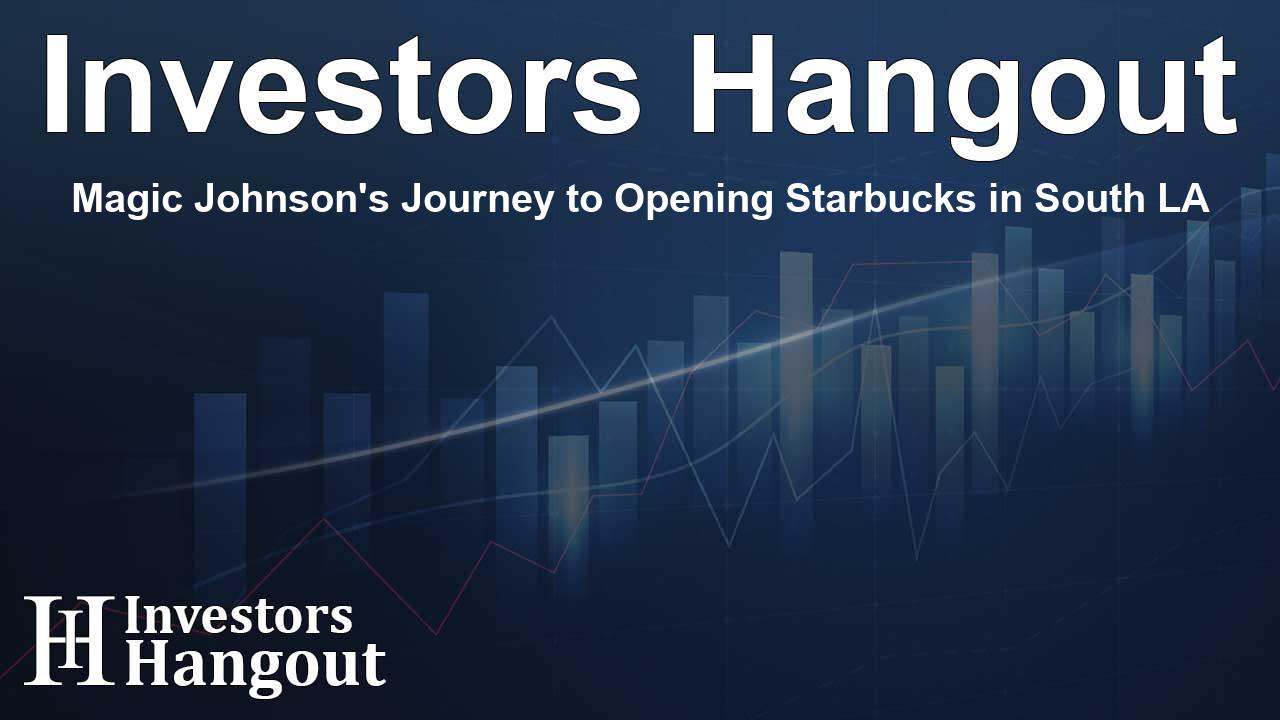Magic Johnson's Journey to Opening Starbucks in South LA

Magic Johnson's Business Journey
NBA Hall-of-Famer Earvin "Magic" Johnson is celebrated for his successful basketball career, collecting five NBA championships along the way. Yet, the most challenging opponent he faced after leaving the court wasn’t fellow legends like Larry Bird or Michael Jordan; it was navigating the complex world of business, specifically with Starbucks (NASDAQ: SBUX).
Challenges in Opening a Starbucks
Johnson's ambition to become a businessman is well-documented, but it was not without significant hurdles. One of his first major ventures involved opening a Starbucks location in South Los Angeles—a city that had very few Starbucks at that time, particularly in urban neighborhoods. Johnson aimed to change this scenario but was soon confronted with a considerable obstacle.
The Starbucks Corporate Structure
One crucial detail about Starbucks is that it operates as a corporate chain rather than a franchise. This means that the corporate entity owns and manages all stores. When Johnson approached Howard Schultz, the founder of Starbucks, about his dream of opening a location, Schultz communicated that he needed to gain the support of the board and shareholders.
The Mission Beyond Profit
For Johnson, the stakes were enormous, not only in terms of financial gain but also in terms of community impact. He envisioned opening his Starbucks in South Los Angeles—a neighborhood still in the recovery phase from the Rodney King riots. While Johnson was born in Michigan, he considered Los Angeles his home and was determined to contribute positively to its revitalization.
Building Credibility and Overcoming Objections
Johnson's status as a local hero significantly bolstered his credibility in South Los Angeles. Prior to his Starbucks venture, he had successfully partnered with AMC Entertainment Holdings (NYSE: AMC) to open a movie theater—an achievement that resonated well within the community. However, securing investment from Starbucks' shareholders proved to be a daunting task.
Convincing Investors of Urban Viability
The investor sentiment focused primarily on profit margins, contrasting starkly with Johnson's vision aimed at community improvement. Although his aspiration to open Starbucks represented a noble cause, it was essential for him to demonstrate to shareholders that urban locations could indeed yield profitable returns.
The Difficult Pitch
Reflecting on his experiences, Johnson said, "The hardest thing I thought I was gonna' do was play against Larry Bird and Michael Jordan. The hardest thing was to go before the Starbucks board and then go into a movie theater packed with good shareholders and try to convince them this is a great move for Starbucks.” Fortunately, his track record, innovative vision, and persuasive charm ultimately won over the skeptics.
Success of the First Location
Once he earned the approval, Johnson opened his first Starbucks on Crenshaw Boulevard—this venture, much like his previous movie theater project, achieved impressive success. He didn’t stop there; over the years, he expanded to open a total of 125 Starbucks locations in urban areas across the United States.
Achievement and Merger with Starbucks
In 2010, after many years of managing his locations, Johnson sold his 125 stores back to Starbucks. This event marked a significant milestone in his business career, solidifying his reputation as a savvy entrepreneur and community leader.
Legacy of Community Investment
Johnson stated, "I became the first person to ever own Starbucks outside of Starbucks. We built 125 in 40 different markets across America. They all did extremely well. And that really gave me, first of all, the stamp of approval. It gave me the track record that I needed of success so I can move on to something else.” His story is a testament not only to business acumen but also to a commitment to community revitalization.
Frequently Asked Questions
1. Who is Magic Johnson?
Magic Johnson is a former professional basketball player and NBA Hall-of-Famer who won five championships and is known for his post-basketball business ventures.
2. What is Johnson's connection with Starbucks?
Johnson aimed to open Starbucks locations in urban areas, starting with his first store in South Los Angeles, which he successfully accomplished.
3. Why did Johnson face challenges with Starbucks?
He needed to convince the Starbucks board and shareholders that urban locations could be profitable while also aligning with his community-focused mission.
4. What was the outcome of Johnson’s Starbucks venture?
Johnson successfully opened 125 locations and eventually sold them back to Starbucks, significantly growing his business portfolio.
5. What community impact did Johnson aim for?
Johnson sought to revitalize South Los Angeles, particularly after the area suffered from civil unrest, by providing job opportunities and community spaces.
About The Author
Contact Hannah Lewis privately here. Or send an email with ATTN: Hannah Lewis as the subject to contact@investorshangout.com.
About Investors Hangout
Investors Hangout is a leading online stock forum for financial discussion and learning, offering a wide range of free tools and resources. It draws in traders of all levels, who exchange market knowledge, investigate trading tactics, and keep an eye on industry developments in real time. Featuring financial articles, stock message boards, quotes, charts, company profiles, and live news updates. Through cooperative learning and a wealth of informational resources, it helps users from novices creating their first portfolios to experts honing their techniques. Join Investors Hangout today: https://investorshangout.com/
The content of this article is based on factual, publicly available information and does not represent legal, financial, or investment advice. Investors Hangout does not offer financial advice, and the author is not a licensed financial advisor. Consult a qualified advisor before making any financial or investment decisions based on this article. This article should not be considered advice to purchase, sell, or hold any securities or other investments. If any of the material provided here is inaccurate, please contact us for corrections.
